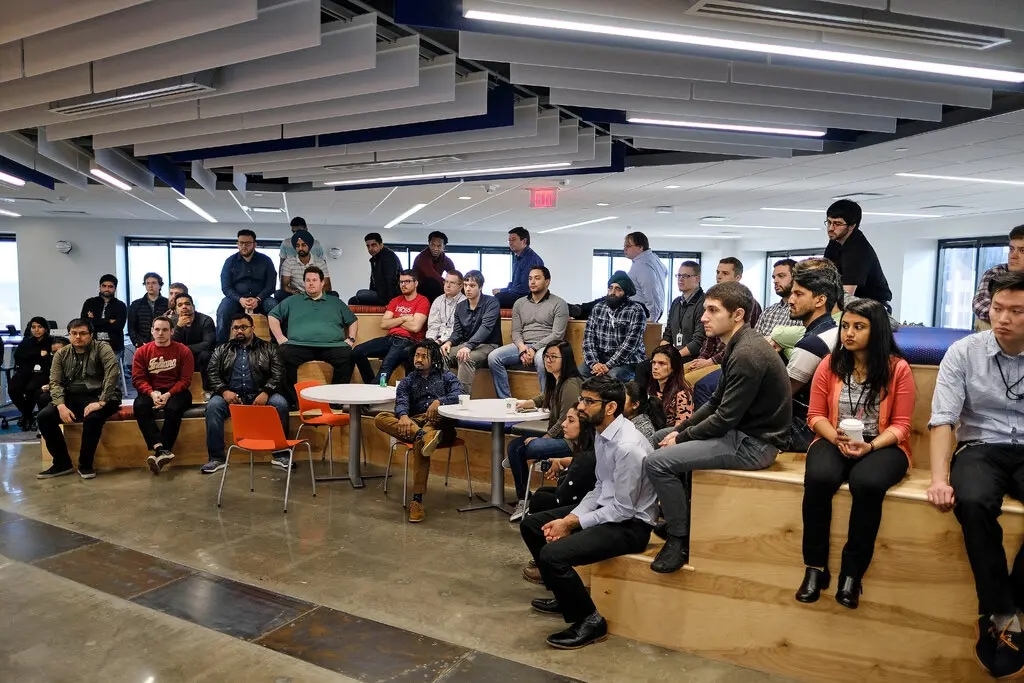The big American dream for most skilled and talented professionals holding an H-1B visa is to get a US green card which is one of the pathways for US citizenship. However, the reality is that Indian AI professionals on H-1B visas face a decades-long waiting period for green cards despite driving innovation in the US. The delay is costing not only the H-1B visa holder, but also the United States and its position as the world’s leading AI player.
In an interview with Financial Express Online, Dmitry Litvinov, CEO and Founder of Dreem, talks about the problems faced by Indian AI professionals in the US on an H-1B visa and how it is impacting the professionals seeking US green cards.
What is the most significant problem faced by Indian AI professionals in the US on an H-1B visa?
Indian professionals on H-1B visas are at the heart of the U.S. AI ecosystem. They are AI data scientist, AI engineers, Product managers of AI products, etc.
From FAANG companies to cutting-edge research labs and high-growth startups, Indian-born scientists and engineers fill critical roles. Many of them hold advanced degrees from American universities and work on everything from foundational models to real-world AI deployment.
And yet, despite their contributions, many face multi-decade waits for permanent residency due to country caps and green card backlogs.
AI is recognized as a field of national interest in the U.S., making the EB2 National Interest Waiver (NIW) visa an attractive option for AI specialists, allowing them to apply for a green card without an employer sponsor.
However, Indian professionals on H1B visas face significant barriers due to U.S. visa policies. A massive backlog in the EB2 category, including NIW, forces them to wait decades for a green card, despite their contributions to the economy and tax payments.
The EB1-A (high priority) visa could expedite the process, but its stringent criteria often fail to account for the significance of AI, limiting access for many specialists. This creates inequity in green card access for Indian AI experts, hindering their career growth and stifling innovation, particularly in startups.
How big is the problem?
Indians receive roughly 73% of all H-1B approvals each year. In fiscal 2023, about three-quarters of specialty-occupation visas went to Indian nationals, making India by far the top source country for high-skilled temporary workers.
While exact figures aren’t published, conservative estimates put over half-million Indian nationals in the U.S. on H-1B visas—predominantly in the tech sector.
With FAANG companies and other industry leaders doubling down on AI initiatives, it’s safe to say at least half of these H-1B holders are working as AI professionals.
At the same time, according to the National Foundation for American Policy of USCIS data, there were over 1.2 million pending EB-2/EB-3 applications filed by Indian nationals, translating into green-card waits of 10–20 years even for those eligible for a National Interest Waiver (2024 numbers).
How do they address it?
Of all the available options, EB-1A is effectively the only viable path for Indian professionals in this situation. Yes, it also has a backlog, but it moves far more quickly: EB-2 India faces over a decade wait, whereas the EB-1 category currently has roughly a three-year queue. With a larger annual visa allocation, priority-date retention, and the option for premium processing, EB-1A provides all the features professionals need to fast-track their cases.
How is it impacting the professionals seeking US green cards?
Status is crucial. Without green cards, many Indian AI professionals in the U.S. are employed at FAANG companies and are hesitant or unable to join startups. This reluctance hinders the dynamic, entrepreneurial development of new technologies and creates unfair competition for talent between startups and large corporations.
If the U.S. cannot offer clear, predictable pathways to permanent residency, it risks turning its AI sector into a temporary training ground. Talented Indian professionals will gain elite experience in American firms, and then take that knowledge to competing innovation hubs in Canada, the UK, the UAE, or even China, where immigration regimes are faster and more welcoming.
Given the rapid development of artificial intelligence and the attention and funding this field is receiving from various countries eager to achieve a breakthrough in AI, professionals from India will be in demand in any of them. They will be able to make a significant contribution to the global development of artificial intelligence—but no longer from the perspective of the U.S.
This is not just an immigration issue—it’s a talent strategy failure. If the U.S. doesn’t simplify its strict policies, it could lose its lead in global AI. Policymakers need to make immigration easier for AI experts, providing clear paths to permanent residency. This will help the U.S. attract the talent needed to stay ahead in AI innovation.

